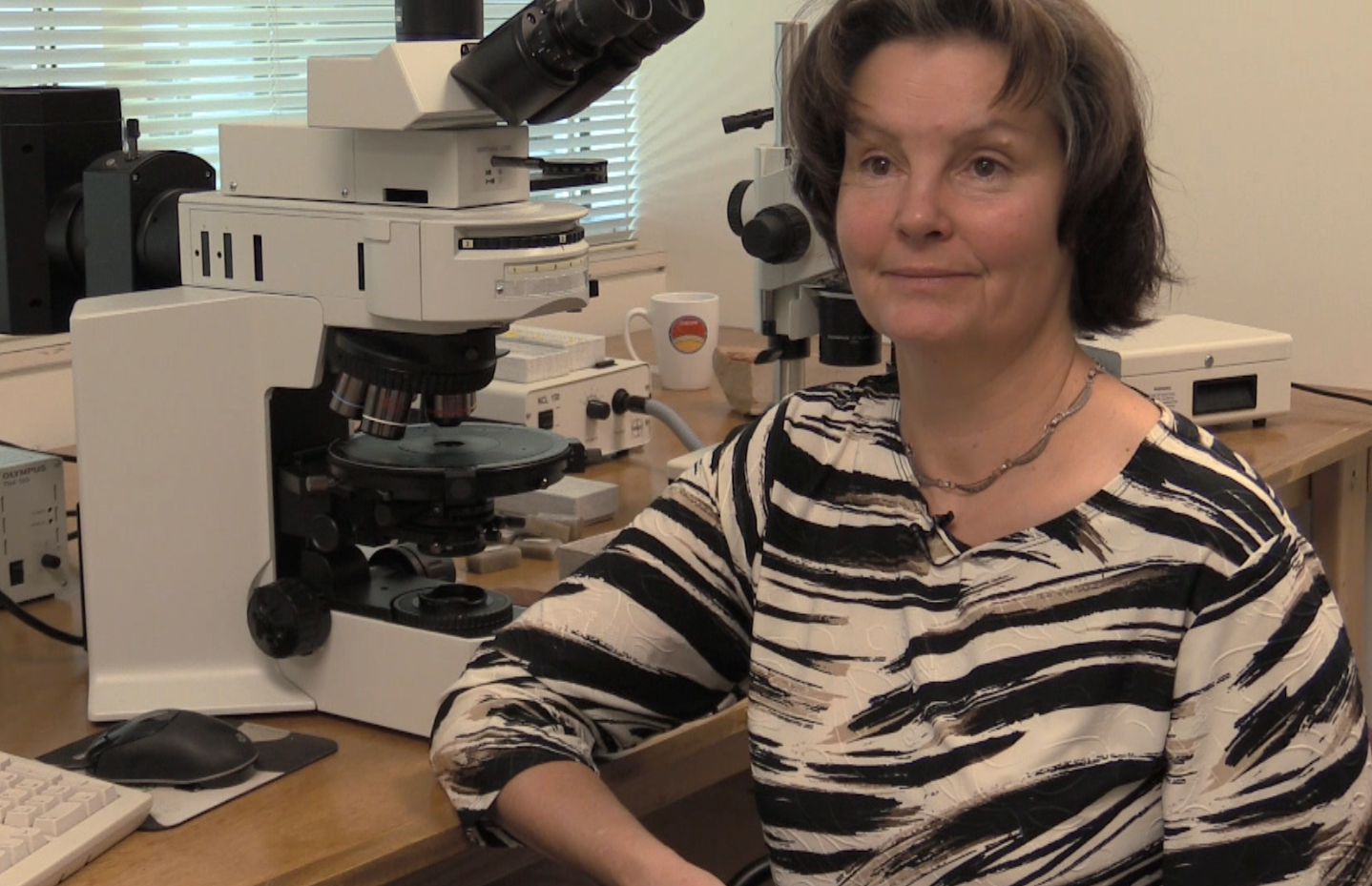Noffke Early Life Research Featured in Science News Magazine
February 03, 2014
 Nora Noffke
Nora Noffke
An article in Science News magazine summarizing current research about early life on Earth focuses on the work of Old Dominion University geobiologist Nora Noffke. The article, "Life's Early Traces: New Finds Help Push Microbe Origins Beyond 3.5 Billion Years Ago," appeared online in late January and will be in the next print issue of the magazine in early February.
Noffke, who has won international recognition during the past decade for research establishing microbially induced sedimentary structures (MISS) as evidence of earliest life on Earth, was the lead author of a paper in the journal Astrobiology late last year that documents the discovery of 3.48 billion-year-old MISS, the oldest ever reported.
That Astrobiology article stirred media interest all over the world, and secured Noffke's position among scientists who are leading the effort to find evidence of the microbes that were Earth's first life forms. Because microbes are so small, no one has found direct fossil evidence of their existence so long ago. Therefore, scientists such as Noffke have had to come up with ingenious ways to build evidence that microbes actually lived on Earth nearly 3.5 billion years ago.
In addition to MISS, scientists are looking for signs of early life in boulder-like structures called stromatolites, which are constructed of layer upon layer of microbial mats and exist in watery environments rich in carbonate.
Noffke and colleagues discovered MISS in 3.48 billion-year-old rock in the Dresser Formation, Pilbara, Western Australia. They believe the structures could be the best and oldest evidence yet that microbes had colonized tidal pools on Earth during the early Achean period, which extends back 4 billion years. The structures - due to their age - might also provide scientists with clues about geologic evidence of microbial life that exists, or might have existed, on Mars.
Noffke's research in South Africa and Australia has turned up geological samples supporting her case that the mats woven of tiny microbes we see today covering tidal flats were also present as life was beginning on Earth. The mats, which are colonies of cyanobacteria, can cause unusual textures and formations in the sand beneath them. Noffke has identified 17 main groups of such textures caused by present-day microbial mats, and has found corresponding structures in geological formations dating back through the ages.
The Science News article describes the microbial ecosystems that formed the Pilbara MISS as having been complex enough to have taken many eras to develop. This indicates that the first cellular life on Earth must have emerged much earlier than 3.5 billion years ago. "Noffke's find and others suggest that, on the timeline of life on Earth, early cells' origins lie quite close to the planet's tumultuous beginnings" about 4.5 billion years ago, the article states.
"The oldest dinosaur fossils date back to about 230 million years ago," according to Science News. "Yet those bones are brand-new compared with Noffke's patterned structures. Time has been tough on tiny, ancient fossils. They rest in rocks that have endured billions of years of Earth's geologic history. ... When searching for signs of early life, scientists comb ancient layers of rock for telltale structures, chemicals and fossils. (Noffke) believes ... impressions stamped into ancient rocks match those formed by microbial mats today."
Some of the MISS that Noffke has identified are actually quite large, up to a square kilometer in size.
Working with Noffke on the Pilbara find were Daniel Christian, a graduate researcher at Old Dominion; David Wacey, of the Centre for Microscopy at the University of Western Australia; and Robert M. Hazen, of the Geophysical Laboratory at Carnegie Institution of Washington (D.C.).

